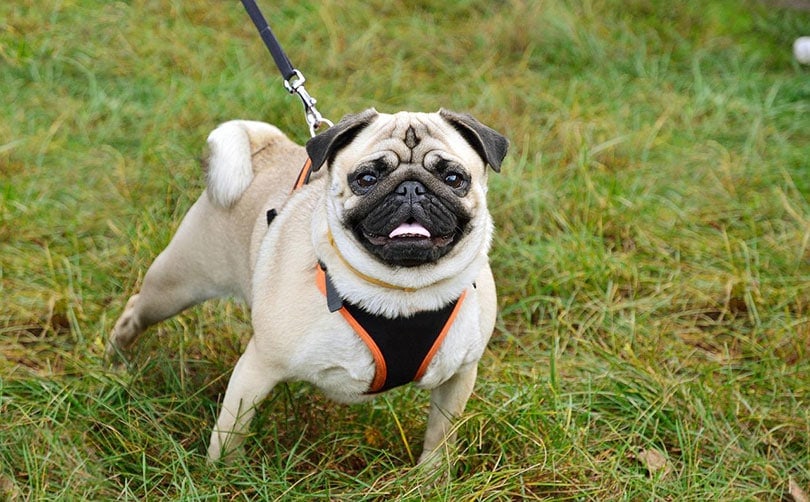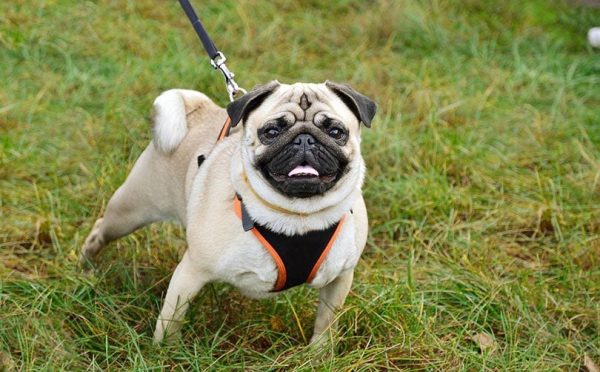Pugs are small dogs with outgoing and friendly personalities. They are playful, full of character, and thrive in most environments due to their small nature, making them a popular dog breed. On average, Pugs can live for about 12 years, but they have been known to live even longer with proper care.
Pugs are not aggressive—however, like most small breeds, they can easily be frightened, which makes for aggressive behavior such as nipping and barking. With good training and socialization, Pugs can develop more confidence and you can avoid unwanted aggression.
How Strong Is a Pug Bite?
Pugs have four teeth types: incisors, canines, premolars, and molars. Adult Pugs usually have 42 teeth—12 incisors, 4 canines, 16 premolars, and 10 molars. They are diphyodont,1 meaning they only grow two sets of teeth in their lifetime. Once a few weeks after birth and again as they grow older.
Despite not being aggressive, their canines are sharp and are their first defense when feeling threatened. They can also nip when teething, but these nips are rarely severe, and they tend to outgrow the habit in adulthood.
However, due to the shape of their head, biting is difficult for them, and they are unlikely to cause any significant damage. As always, there are some exceptions, and care should always be taken when dealing with an agitated Pug.
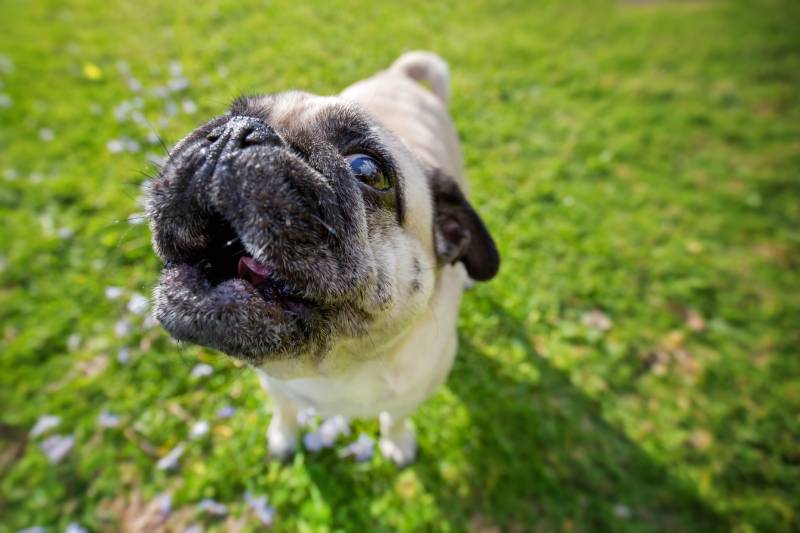
Are Pugs Good Family Dogs?
Pugs are the perfect family pet. They are highly intelligent, which makes them popular. Pugs are ideal for people with a lot of love and time to give since they thrive on human affection. They love being cuddled and petted and can get jealous when another pet is in the home.
Due to their playful and adaptable nature, Pugs make excellent companions for children. Their small size makes it difficult for them to hurt children as they play. Pugs are one of the most gentle and passive of all dog breeds, and they will tolerate the prodding of children without nipping or biting. However, they still need to be socialized to ensure they do not threaten small kids. Also, they should always be supervised around small children and pets to ensure everybody is safe and happy.
Pugs are low-maintenance, which makes them perfect for older and first-time owners. They are also a good choice for apartment dwellers due to their small, compact size. Light sleepers, on the other hand, should invest in a pair of earplugs—Pugs tend to snore loudly.
Pug 101
Appearance
The modern-day Pug has a compact square body with a deep chest and well-developed muscles. The head is short and large in relation to the body. Pugs typically have two distinct ear shapes; rose and button. Rose-shaped ears are small and folded with the edge against the side of the head, while button ears are smaller.
While Pug legs are straight and small, they tend to be quite strong. The most endearing trait among Pugs is their large dark eyes which give them an animated expression. Their coat comes in several shades; black, fawn, silver, and apricot.
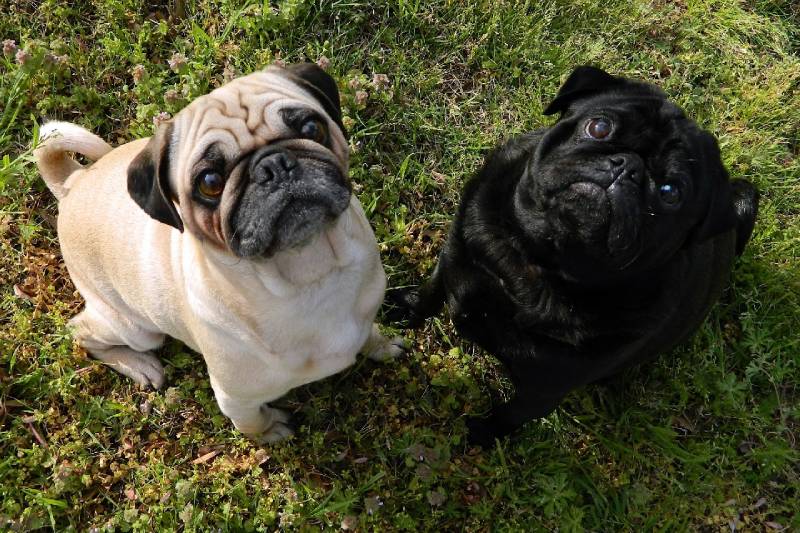
Temperament
The temperament of Pugs is affected by several factors, including genetics, socialization, and training. In general, they are curious and playful and will be content to sit on your lap whenever possible.
However, their temperament can vary, and their mood can change according to the environment. These dogs will be happy and playful in a comfortable and high-energy situation.
Training
Pugs can be challenging to train and housebreak. They have small bladders, so they must relieve themselves often, sometimes after every hour. For this reason, crate training works well with Pugs if they cannot go outside often.
When it comes to obedience training, Pugs are challenging to train since they tend to be stubborn from time to time. That being said, it’s crucial to note that Pugs are very intelligent and can be properly trained if you put in enough effort.
In most instances, positive reinforcement works best. Keep the training sessions short and consistent to keep them engaged. Usually, it takes around 3 months to train your Pug properly.
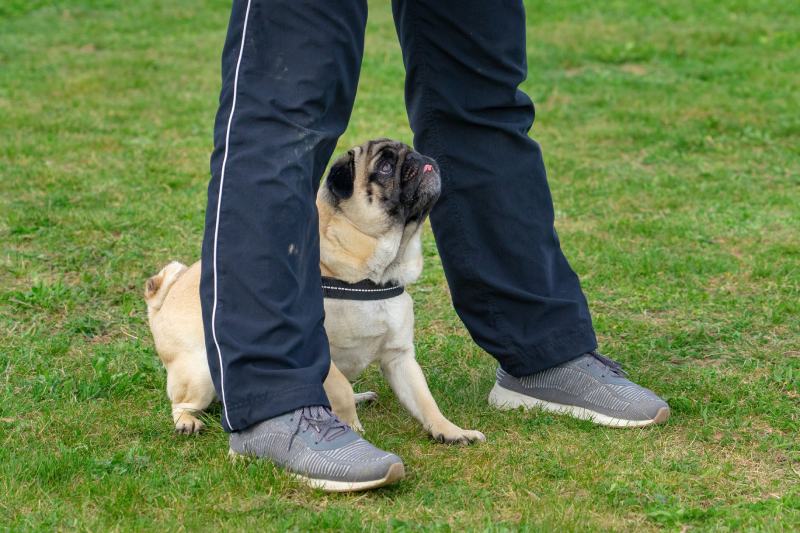
Grooming
Although Pug coats are short, they shed a lot, especially during summer. You need to brush them regularly, at least twice a week during the shedding season, and wash them at least once a month.
Trimming their nails regularly is also essential if your Pug does not wear out their nails in outdoor settings. Cleaning their ears often also prevents them from getting infected. The Pug’s wrinkles on the face are a hotbed for infections when they are damp and dirty, and they need special attention. Ensure you dry the folds thoroughly after bathing—you can do this using a cotton ball or baby wipes.
Since Pugs often suffer from gum diseases, regular brushing with a toothbrush and toothpaste designated for small dogs helps prevent tartar from building up. To accustom your Pug to being groomed regularly, start doing it when it’s still a puppy.
Conclusion
Pugs were originally bred to be companions, and that’s what they do best. They are one of the best breeds for a cuddle! Additionally, Pugs are welcoming to strangers when their owners approve, but they might nip or bite them when they feel threatened. However, if you expect a Pug to hunt or guard, you are in for a surprise—the only time they’ll use their canines is when playing with their toys.
Featured Image Credit: oleg_mit, Pixabay

